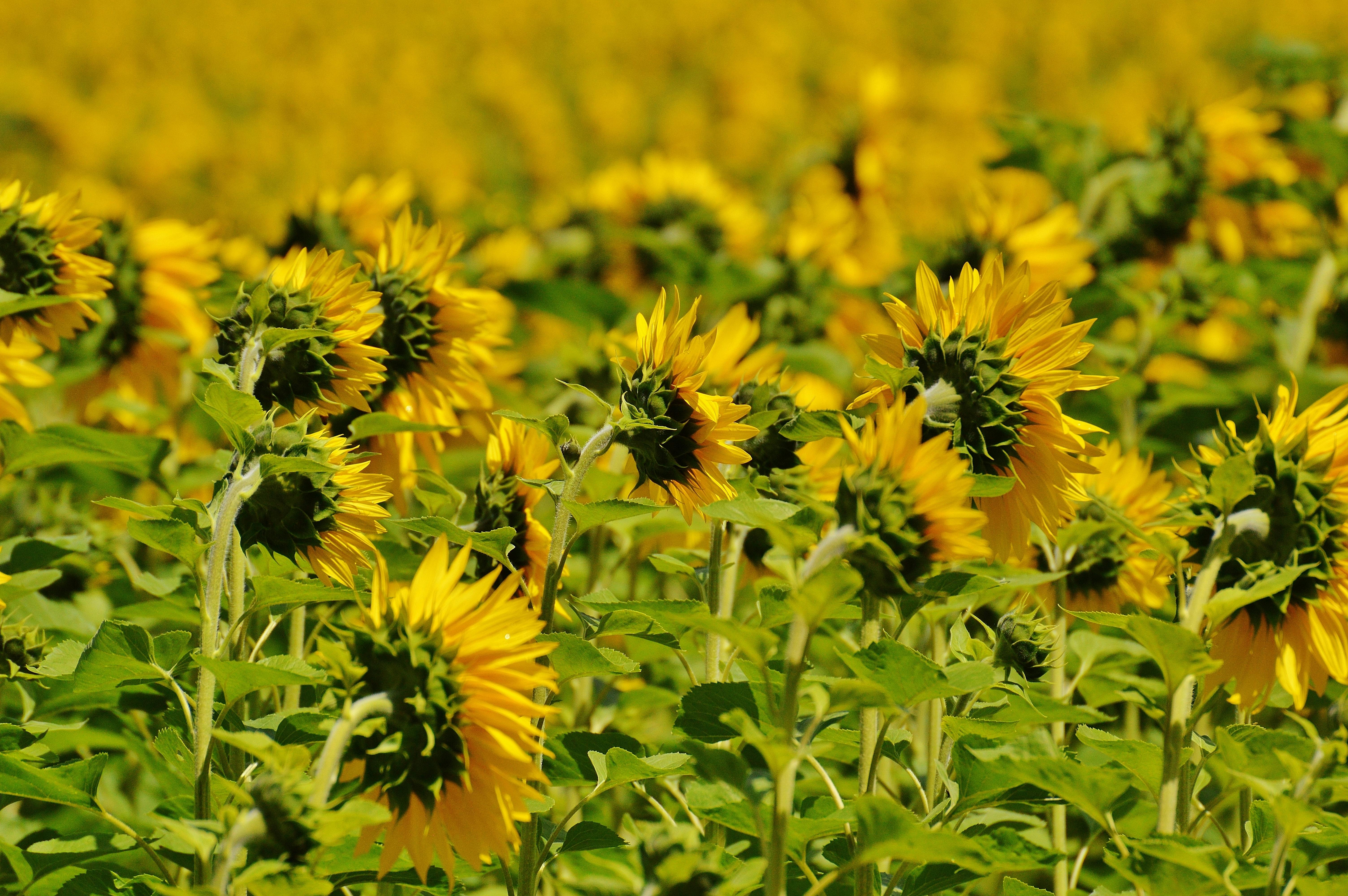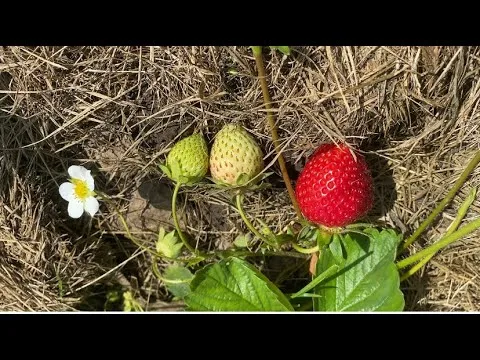Strawberries are a popular fruit that is enjoyed by people all around the world. One of the common questions asked about strawberries is whether or not they come back each year. The answer to this question is yes, strawberry plants do come back each year, and in fact can continue to fruit for many years. This article will discuss how strawberry plants grow and why they come back each year.Yes, strawberry plants can come back each year. They are perennials, meaning they can survive the winter and come back in the spring. To encourage them to come back each year, you should mulch around them and fertilize them regularly.
How to Make Sure your Strawberry Plant Returns Yearly
Growing strawberries is a rewarding and enjoyable experience, but it takes some maintenance to ensure that the strawberry plant returns yearly. With proper care and attention, you can extend the life of your strawberry plants and enjoy delicious fruit year after year. Here are some tips to help you get the most out of your strawberry plant.
Location
The location of your strawberry plant is essential for growth and survival. Strawberries need at least 6-8 hours of direct sunlight per day, so make sure to select a spot that gets plenty of sun throughout the day. Consider if there are any obstructions such as trees or buildings that could block out the sunlight. Additionally, make sure to select a spot with well-drained soil so that the roots have access to air and water without getting soggy.
Watering
Strawberry plants need consistent moisture throughout the growing season in order for them to thrive and produce fruit. Water plants deeply but frequently, as this will encourage deep root growth which can help protect against drought stress in dry conditions. Avoid over-watering your plants as this can lead to root rot or other diseases.
Fertilizer
Fertilizing your strawberry plant will help boost its growth and yield more fruit. Use a balanced fertilizer such as 10-10-10 or 20-20-20 with equal amounts of nitrogen, phosphorous, and potassium to promote healthy growth throughout the season. Apply fertilizer according to directions on the package in early spring when new leaves appear, then again in late spring or early summer before blooms appear.
Mulching
Mulching is an important part of keeping your strawberry plant healthy and productive each year. Mulch helps conserve soil moisture, reduce weeds, and protect against soil erosion. Use organic mulch such as straw or shredded bark around the base of each plant for best results. Make sure not to cover any foliage when applying mulch so that it doesn’t smother new growth or blooms.
With these tips in mind, you can ensure that your strawberry plant returns yearly with an abundant crop of sweet and delicious fruits!
How to Care for Your Strawberry Plant During the Winter
During the winter months, your strawberry plant may suffer from cold temperatures and shorter days. Fortunately, there are a few steps you can take to protect your plant and keep it healthy throughout the winter season. Here are some tips on how to care for your strawberry plant during the winter.
First, it is important to mulch your strawberry plants with straw or other organic material. This will help insulate the soil and keep the roots of your plant protected from extreme temperatures. Additionally, mulching will help retain moisture in the soil and reduce weeds.
Second, it is important to trim back any dead or damaged leaves or branches during the winter months. This will help ensure that your plant can focus its energy on growing new fruits rather than trying to repair damaged foliage. It is also a good idea to prune any overly large or unruly branches as well.
Third, if you live in an area with cold winters, it is important to cover your strawberry plants with a frost blanket or other protective covering during cold spells. This will help keep them warm and protect them from frost damage. Make sure that the covering is large enough to cover all of your plants and be sure to remove it when temperatures rise again.
Finally, make sure that you water your plants regularly throughout the winter months. Since most plants are dormant during this time of year, they need less water than during other times of year but they still require some moisture in order to survive until springtime arrives.
By following these simple tips on how to care for your strawberry plant during the winter months, you can ensure that your plants stay healthy and fruitful throughout this season and beyond!
Insufficient Watering
One of the reasons why your strawberry plant may not come back each year is due to insufficient watering. Strawberries require a lot of water and can dry out quickly, especially during hot summer months. If your strawberry plants don’t receive enough water, they will not be able to survive and will not come back the following year.
Lack of Sunlight
Another reason why your strawberry plant may not come back each year is due to lack of sunlight. Strawberries need at least 6-8 hours of direct sunlight a day in order to thrive. If your plants are not receiving enough sunlight, they will not be able to photosynthesize properly and will eventually die off.
Inadequate Nutrients
A third reason why your strawberry plant may not come back each year is due to inadequate nutrients in the soil. Strawberries need a variety of minerals and nutrients in order to grow properly. If the soil does not contain enough of these essential nutrients, the plant will struggle and eventually die off.
Insect Infestation
A fourth reason why your strawberry plant may not come back each year is due to an insect infestation. Many insects are attracted to strawberries and can wreak havoc on a strawberry patch if left unchecked. These insects can damage or even kill the plants if their populations are not controlled properly.
Disease Outbreak
Finally, another reason why your strawberry plant may not come back each year is due to disease outbreak. Diseases can spread quickly among vulnerable plants and cause them to die off before they have a chance to reproduce or regenerate for the next season. If this happens, you will have to start from scratch with new plants next season if you want any fruit from your garden!
The Benefits of Keeping a Perennial Strawberry Plant
Strawberries are a delicious and versatile fruit that can be used in many different recipes. They are also great for eating fresh, as snacks or in salads. Keeping a perennial strawberry plant is an excellent way to ensure you always have access to fresh, flavorful strawberries. Here are some of the benefits of keeping a perennial strawberry plant:
Firstly, perennial strawberry plants are incredibly easy to maintain. Once established, they require very little effort on your part. All you need to do is water them regularly and provide adequate sunlight. Additionally, they don’t require any fertilizer or special care – simply keep them well-watered and they should thrive!
Secondly, perennial strawberry plants can provide you with fresh berries all season long. Depending on the variety you choose, your plants could produce strawberries from spring through fall! This means that you will always have access to sweet, juicy strawberries when you need them.
Thirdly, growing your own strawberries is much more economical than buying them from the store. You only need one plant to produce an abundance of berries throughout the season – this could save you a lot of money in the long run! Plus, homegrown strawberries tend to taste much better than those found in stores since they are picked at their peak ripeness.
Finally, having a strawberry plant in your garden will attract beneficial insects such as bees and ladybugs which help pollinate other plants nearby. This is an added bonus since these helpful insects help keep unwanted pests away from your garden and increase its overall health and productivity!

Varieties of Strawberry Plants That Return Each Year
Strawberries are a favorite summer treat and with the right variety, you can enjoy them for many years to come. There are several perennial varieties of strawberries that will return each year with a little love and care. The best varieties of strawberry plants to choose from include Alpine, Honeoye, Quinault, Seascape, and Totem.
Alpine strawberries are small and sweet with a unique flavor. They can grow in both full sun or partial shade and produce small white flowers in spring and red fruit in the summer. Alpine strawberry plants have shallow root systems so you need to be careful when planting them in wet soils or they may rot.
The Honeoye variety is one of the most popular strawberry plants as it produces heavily each year. It is an everbearing variety that produces fruit from mid-summer until frost. The fruit is large, sweet, and flavorful making it great for jams or fresh eating.
Quinault is another great everbearing variety that produces a high yield of large berries each year. It prefers cool temperatures in spring and is a good choice for areas with short growing seasons as it ripens quickly after flowering. This variety is also resistant to some diseases common in strawberries such as leaf spot and verticillium wilt.
Seascape is one of the most disease resistant varieties available as well as being cold hardy meaning it can withstand colder temperatures than many other varieties without damage to the plant or fruit quality being affected. The berries this variety produces are large, sweet, juicy, and flavorful making them great for eating fresh or baking into pies or jams.
Totem is an everbearing variety that produces large amounts of small to medium-sized berries throughout the season starting in late spring through early fall. It’s an excellent choice for areas with short growing seasons due to its quick ripening time after flowering and cold hardiness meaning it can withstand cooler temperatures without harm to plant or berry quality being affected.
Common Diseases That May Affect Your Strawberry Plant’s Return
Fungal diseases, viruses, and pests are some of the most common causes of damage to strawberry plants. Fungal diseases can be caused by a number of different fungi, including powdery mildew, gray mold, and botrytis blight. These diseases are typically spread through spores in the air or on leaves and can cause leaf spots, wilting, and even fruit rot. Viruses can also affect strawberry plants’ health and productivity. Common viral diseases include leaf curl, ringspot virus, and verticillium wilt. These viruses can spread quickly through a plant’s vascular system and cause stunted growth or yellowing of foliage. Pests such as aphids, mites, thrips, cutworms, slugs, snails, earwigs, and weevils can also damage strawberry plants by feeding on the leaves or fruit. They can also transmit viruses from plant to plant.
In order to prevent these diseases from taking hold on your strawberry plant’s return crop it is important to practice good cultural practices such as providing adequate drainage for your soil and avoiding over-watering which can increase the risk of disease. Furthermore it is important to inspect your plants regularly for signs of insect damage or disease symptoms such as discoloration or wilting leaves. If you notice any early signs of disease it is important to treat the plants immediately with an appropriate fungicide or insecticide in order to reduce the risk of spread to other plants in your garden or farm. Additionally you should practice crop rotation in order to avoid any build-up of pests or disease organisms in the soil that may affect future crops as well as maintaining good hygiene by removing any infected debris from the area after harvest so that it does not provide a breeding ground for pests or pathogenic organisms.
Tips to Protect Your Strawberries From Animal Predators
Strawberries are a tasty treat, but they can be vulnerable to animal predators in your garden. If you want to keep your strawberry patch safe from animals, here are a few tips you can use:
1. Use Fencing: Fences are one of the most effective ways to keep animals out of your strawberry patch. A fence should be at least three feet tall and buried at least six inches into the ground. Make sure there are no gaps or openings that an animal could squeeze through.
2. Install Netting: You can also use netting to cover your strawberry patch and keep animals away. Just make sure you choose a netting that is strong enough to withstand the elements and not easily damaged by the wind or rain.
3. Plant Deterrents: There are certain plants that animals don’t like, such as lavender, garlic, chives, and mint. Planting these around the perimeter of your strawberry patch will help deter animals from coming in close proximity.
4. Use Repellents: Chemical repellents can also be used to keep animals away from your strawberry patch. These repellents come in many forms, including sprays and granules that you can spread around the perimeter of your garden bed.
5. Monitor Regularly: Finally, it’s important to monitor your strawberry patch regularly for signs of animals or damage they may have caused. If you notice any evidence of animal activity, take action right away to prevent further damage or destruction of your strawberries.
By following these tips, you can protect your strawberries from animal predators and enjoy a plentiful harvest this summer!

Conclusion
Strawberry plants can come back each year, and many gardeners enjoy planting them for the delicious fruits they produce. Strawberries are relatively easy to grow, but require a bit of knowledge and effort to get the best results. Planting in a sunny location and providing adequate water and nutrients will help ensure that the plants come back with an abundant harvest. Some varieties are perennial and will return year after year, while others may need to be replanted each year.
No matter which type of strawberry plant you choose, they can provide a season of juicy fruits that are both delicious and nutritious. With a little care and attention, your strawberry patch will provide years of pleasure and tasty treats for you to enjoy!



